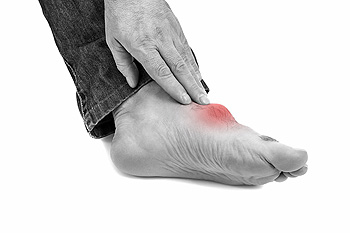What Does Uric Acid Have to Do with Gout?
Tuesday, 27 July 2021 00:00Uric acid is a byproduct of the process your body goes through as it breaks down purines, chemical compounds that naturally occur in your body as well as in certain foods such as red meat, seafood and alcoholic beverages. Normally, most uric acid is reabsorbed back into the body, or expelled through the kidneys. When your body produces too much uric acid (or has difficulty flushing it), hard, crystal-like deposits build up in and around the joints. This is known as gout. While this painful condition may manifest in any joint of the body, it most commonly occurs in the metatarsophalangeal joint of the big toe. These sharp urate crystals can cause severe flare-ups of pain, swelling, tenderness and heat in the affected joint. Symptoms tend to develop quickly and occur more often at night. They can come back and increase in frequency if the underlying condition is not treated properly. Contact a podiatrist for an exam, and to discuss possible treatments for this painful arthritic condition.
Gout is a painful condition that can be treated. If you are seeking treatment, contact Dr. Michael A. Wood from Foot Health Institute. Our doctor will treat your foot and ankle needs.
What Is Gout?
Gout is a form of arthritis that is characterized by sudden, severe attacks of pain, redness, and tenderness in the joints. The condition usually affects the joint at the base of the big toe. A gout attack can occur at any random time, such as the middle of the night while you are asleep.
Symptoms
- Intense Joint Pain - Usually around the large joint of your big toe, and it most severe within the first four to twelve hours
- Lingering Discomfort - Joint discomfort may last from a few days to a few weeks
- Inflammation and Redness -Affected joints may become swollen, tender, warm and red
- Limited Range of Motion - May experience a decrease in joint mobility
Risk Factors
- Genetics - If family members have gout, you’re more likely to have it
- Medications - Diuretic medications can raise uric acid levels
- Gender/Age - Gout is more common in men until the age of 60. It is believed that estrogen protects women until that point
- Diet - Eating red meat and shellfish increases your risk
- Alcohol - Having more than two alcoholic drinks per day increases your risk
- Obesity - Obese people are at a higher risk for gout
Prior to visiting your podiatrist to receive treatment for gout, there are a few things you should do beforehand. If you have gout you should write down your symptoms--including when they started and how often you experience them, important medical information you may have, and any questions you may have. Writing down these three things will help your podiatrist in assessing your specific situation so that he or she may provide the best route of treatment for you.
If you have any questions, please feel free to contact one of our offices located in Lansing, and Chicago, IL . We offer the newest diagnostic and treatment technologies for all your foot care needs.





